Exhibition dates: 17th September 2014 – 1st February 2015
Marc Chagall (French born Russia, 1887-1985)
Figura davanti alla volta blu
1911
Gouache on paper
A bumper posting on this glorious artist – another who, too late, realised the threat of Nazi Germany and only survived deportation and death by the skin of his teeth. It would have been a sad loss, for he possesses an unbridled passion for life. Social conscience, mythology, iconography, place, identity, race, religion, beauty, war and tragedy. And the exemplary use of colour in his metaphysical, fantastical scenes. But above all…. MAGIC!
Marcus
.
Many thankx to the Palazzo Reale for allowing me to publish the photographs in the posting. Please click on the photographs for a larger version of the image.
“If I create from the heart, nearly everything works; if from the head, almost nothing.”
.
Marc Chagall
“Chagall a pioneer of modern art and one of its greatest figurative painters… [who] invented a visual language that recorded the thrill and terror of the twentieth century…
On his canvases we read the triumph of modernism, the breakthrough in art to an expression of inner life that … is one of the last century’s signal legacies. At the same time Chagall was personally swept up in the horrors of European history between 1914 and 1945: world wars, revolution, ethnic persecution, the murder and exile of millions. In an age when many major artists fled reality for abstraction, he distilled his experiences of suffering and tragedy into images at once immediate, simple, and symbolic to which everyone could respond.”
.
Wullschlager, Jackie. Chagall: A Biography. Knopf, 2008. p. 4
Marc Chagall (French born Russia, 1887-1985)
Daphnis and Cloe
1911
Watercolour
16.5 x 21cm
Private collection
Marc Chagall (French born Russia, 1887-1985)
Il compleanno (Birthday)
1915
Oil on cardboard
The Museum of Modern Art, New York. Acquired through the Lillie P. Bliss Bequest, 1949
© 2014 Digital image, The Museum of Modern Art, New York/Scala, Firenze © Chagall ® by SIAE 2014
Marc Chagall (French born Russia, 1887-1985)
The Blue House
1917
Oil on canvas
66 x 96.8cm
Musée des Beaux-Arts, Liège, France
Marc Chagall (French born Russia, 1887-1985)
Matrimonio (Wedding)
1918
Oil on canvas
100 x 119cm
Tretyakov Gallery, Moscow, Russia
Marc Chagall (French born Russia, 1887-1985)
Modello di grande scena per “Mazeltov” di Scholem Aleichem (Model of great scene for “Mazeltov” Scholem Aleichem)
1919
Oil and black pencil on paper pasted on cardboard
Private Collection
Marc Chagall (French born Russia, 1887-1985)
Composizione con cerchi e capra (Teatro d’arte ebraica) (Composition with circles and goat (Jewish Theatre Art))
1920
Oil on cardboard laid on wood agglomerate
Private Collection
Marc Chagall (French born Russia, 1887-1985)
Angelo cadente (The Falling Angel)
1923
Oil on canvas
148 x 189cm
Private collection
Marc Chagall (French born Russia, 1887-1985)
Bella con un libro e un vaso di fiori (o Bella a Mourillon) (Beauty with a book and a vase of flowers (or Bella in Mourillon))
1926
Oil on canvas
Credits: Collezione Privata
© Chagall ® by SIAE 2014
Marc Chagall (French born Russia, 1887-1985)
Nude above Vitebsk
1933
Oil on canvas
Private collection
© Chagall ® by SIAE 2014
Marc Chagall (French born Russia, 1887-1985)
La mucca con l’ombrello (Cow with Parasol)
1946
Oil on canvas
New York, The Metropolitan Museum of Art, Bequest of Richard S. Zeisler, 2007
© Chagall ®, by SIAE 2014
Marc Chagall (French born Russia, 1887-1985)
The Red Circus
1956-1960
Oil on canvas
Marc Chagall (French born Russia, 1887-1985)
Big Sun
1958
Oil on canvas
Marc Chagall (French born Russia, 1887-1985)
War (Guerra)
1964
Oil on canvas
163 x 231cm
Kunsthaus Zürich, Zürich, Switzerland
Marc Chagall (French born Russia, 1887-1985)
The Players (i giocatori)
1968
Oil no canvas
150 x 160cm
Private collection
Marc Chagall (French born Russia, 1887-1985)
The Grand Parade
1979
Oil on canvas
119 x 132cm
Private collection
“Will the hurried men of today be able to penetrate her work, her world?” is the question asked by Marc Chagall in 1947 in the postface to the memoirs of his wife Bella, who left him “in the shadows” following her sudden death three years earlier. However, this question could also be asked about his own work, the work of an artist who speaks such a universal language that he is loved by everyone alike, both young and old, men and women, scholars and men on the street. Chagall is an artist who is known and recognised by everyone and, out of all the 20th-century artists, was one of the few to remain faithful to himself despite living through a century of wars, catastrophes, political and technological upheavals.
The exhibition narrative has arisen from a question and a need: on the one hand, the attempt to understand the strength that an enabled an artist who experimented with the styles of all the avant-garde movements, to remain so consistent to himself, always curious about the world around him, developing a style that can be recognised immediately by people of any age and any social status; on the other, the need to study Chagall’s work in order to identify the secret behind the poetry of this fragile man who was yet able to keep faith with his traditions and with his humanity, despite living in a world shaken to the core by indescribable and until then unimaginable catastrophes.
The exhibition opened on 17 September at the Palazzo Reale in Milan and is the biggest retrospective ever devoted to Marc Chagall in the last 50 years in Italy, with over two hundred and twenty works – mainly paintings from 1908 onwards, when Chagall painted his first work Le Petit Salon, right up to his final, monumental works of the 1980s – which guide visitors through the artistic career of Marc Chagall. Works from the collections of his heirs, some of which have not been exhibited to the public before, feature alongside masterpieces from the world’s most important museums, including the MoMA, the Metropolitan Museum in New York, the National Gallery in Washington, the State Russian Museum in St Petersburg, the Centre Pompidou, and over fifty public and private collections that have so generously collaborated. The exhibition theme therefore focuses on a new interpretation of the language of Chagall, whose poetic vein developed throughout the 20th century out of a blend of the best western European traditions: from his original Jewish culture to the Russian culture and his encounter with French avant-garde painting.
“The exhibition features a comprehensive chronological narrative, which is divided into sections, starting with his earliest works painted in Russia; his first visit to France and his subsequent return to Russia where he stayed until 1921; the second period of his exile, opened by the autobiography written by Chagall when he left Russia forever, living firstly in France and then, in the 1940s running away from Nazism, in America where he endured the tragedy of the death of his beloved wife Bella; his return to France and his decision to settle permanently on the Cote d’Azur, where Chagall rediscovered his most relaxed poetic language, calmed by the colours and atmosphere of the south.
The exhibition provides visitors with an understanding of how, despite living in perennial exile, Chagall never lost hold of the thread that kept the child he used to be in his heart; how, over the years and throughout the terrible events that marred his existence, he succeeded in preserving his sense of amazement, joy and wonder inspired by nature and humanity, as well as his strong faith that led him to believe in the possibility of a better world and seek to build it in all possible ways. Visitors will also discover his highly original poetic language, born out of the assimilation of the three cultures to which he belonged: Jewish culture (the visual tradition of its ornate manuscripts inspired the expressive, non-perspectival and sometimes mystic elements of his work); Russian culture (evident both in the folk images of the luboks and the religious images of the icons); western culture (in which he assimilates the great artists of tradition, from Rembrandt to the avant-garde artists whom he frequented so assiduously). They will also observe his sense of wonder at nature and the amazement inspired by living creatures that places him closer to mediaeval sources than 20th-century ones.
Flowers and animals are a constant presence in his paintings, enabling him on the one hand to overcome the Jewish interdiction of human depiction, while on the other becoming metaphors for a possible world in which all living beings can live in peace as in Russian mediaeval culture. In the words of Giovanni Arpino: “The soul of Chagall is a bleating soul, as mild as it is invincible because it escapes the horrors, the snares, the outrages … His paradise is an earthly Otherworld that encompasses the simulacra of life, a physical place that becomes metaphysical precisely because we have all killed it during daily life.” His art constitutes a sort of metissage [mix] between cultures and traditions. The fundamental key to his modernity lies in his desire to transform contamination into a value, a work of art into a language able to ask questions that have as yet been left unanswered by mankind.
After Milan the exhibition will travel to the prestigious Musees royaux des Beaux-Arts de Belgique / Koninklike Musea voor Schone Kunsten van Belgie, Bruxelles.
Press release from the Palazzo Reale website
Marc Chagall (French born Russia, 1887-1985)
La nascita (The birth)
1911
Oil on canvas original pasted on wood (plywood)
Private collection
© Chagall ® by SIAE 2014
Marc Chagall (French born Russia, 1887-1985)
The Soldier Drinks (Soldato che beve)
1911
Oil on canvas
109.8 x 94.7cm
Solomon R. Guggenheim Museum, New York
Marc Chagall (French born Russia, 1887-1985)
Bride with fan (Sposa con ventaglio)
1911
Oil on canvas
Private Collection
Marc Chagall (French born Russia, 1887-1985)
I and the Village
1911
Oil on canvas
192.1 x 151.4cm
Museum of Modern Art, New York
Marc Chagall (French born Russia, 1887-1985)
Nude with comb (Nuda con pettine)
1911-1912
Black ink and gouache on paper
Marc Chagall (French born Russia, 1887-1985)
The Fiddler
1912
Oil on canvas
188 x 158cm
Stedelijk Museum, Amsterdam
Marc Chagall (French born Russia, 1887-1985)
Soldiers
1912
Private collection
38.1 x 32.4cm
Marc Chagall (French born Russia, 1887-1985)
The Old Jew (il vecchio ebreo)
1912
Oil on canvas
Marc Chagall (French born Russia, 1887-1985)
Self-portrait in profile
1914
Oil on cardboard
34 x 27.9cm
Private collection
Marc Chagall (French born Russia, 1887-1985)
Blue Lovers
1914
Tempera on paper pasted on cardboard
49 x 44cm
Private collection
Marc Chagall in his studio of Saint-Paul de Vence
Nd
Marc Chagall (French born Russia, 1887-1985)
Red Jew
1915
Oil on cardboard
Russian Museum, St. Petersburg, Russia
Marc Chagall (French born Russia, 1887-1985)
The Poet Reclining (Il poeta giacente)
1915
Oil on board
Support: 772 x 775mm
Frame: 953 x 960 x 91mm
© Tate, London 2014 © Chagall ® by SIAE 2014
Marc Chagall (French born Russia, 1887-1985)
La passeggiata (The walk)
1917-1918
Oil on canvas
Russian State Museum, St. Petersburg
© Chagall ® by SIAE 2014
Marc Chagall (French born Russia, 1887-1985)
Al Cavalletto (tavola 18 di “Ma Vie”)
1922
Etching and drypoint on Japanese paper
Private collection
© Chagall ® by SIAE 2014
Marc Chagall (French born Russia, 1887-1985)
Autoritratto (tavola 17 di “Ma Vie”) (Self-portrait)
1922
Etching and drypoint on Japanese paper
Private collection
© Chagall ® by SIAE 2014
Marc Chagall (French born Russia, 1887-1985)
Study for The green violinist (studio violinista verde)
1917
Marc Chagall (French born Russia, 1887-1985)
Two pigeons
1925
Gouache, ink and blue ink on coloured paper
Private collection
Marc Chagall (French born Russia, 1887-1985)
L’aquila e lo scarabeo
1926
Gouache on paper pasted on wooden panel
Private collection
© Chagall ® by SIAE 2014
Marc Chagall (French born Russia, 1887-1985)
The Madonna of the Village
1938-1942
Oil on canvas
Thyssen-Bornemisza Museum, Madrid
© Chagall ® by SIAE 2014
Marc Chagall (French born Russia, 1887-1985)
Mondo rosso e nero o Sole rosso (Red and black world)
1951
Gouache, watercolour, pastel on paper pasted on canvas
Private collection
Marc Chagall (French born Russia, 1887-1985)
Il trionfo della musica – Maquette per il murale Metropolitan Opera, Lincoln Art Center, New York (The triumph of music – Maquette for the mural Metropolitan Opera, Lincoln Art Center, New York)
1966
Tempera, gouache and collage on paper
Private collection
Marc Chagall (French born Russia, 1887-1985)
Lovers over Saint-Paul
1968
Oil, tempera and sawdust on canvas
145 x 130cm
Private collection
© Chagall ® by SIAE 2014
Palazzo Reale
Piazza del Duomo 12
Milan, Italy
Opening times:
Tuesday – Sunday 10 – 19.30




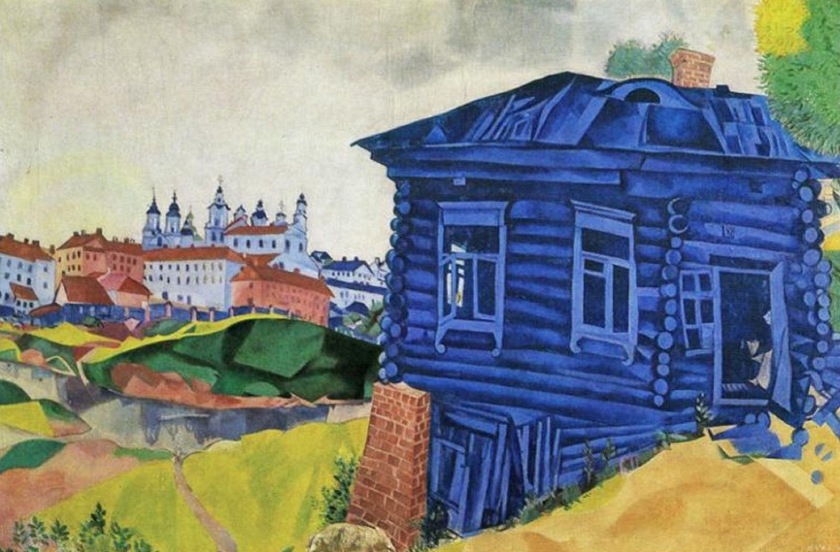
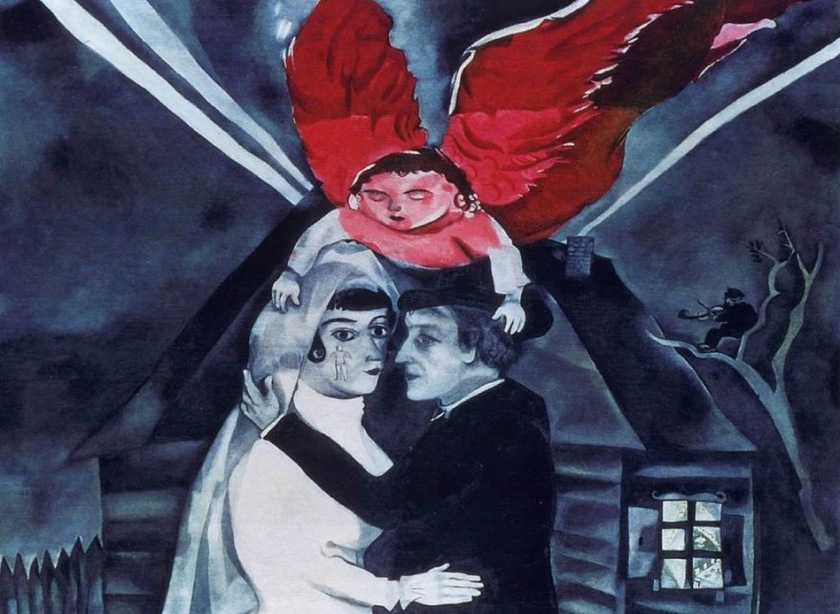










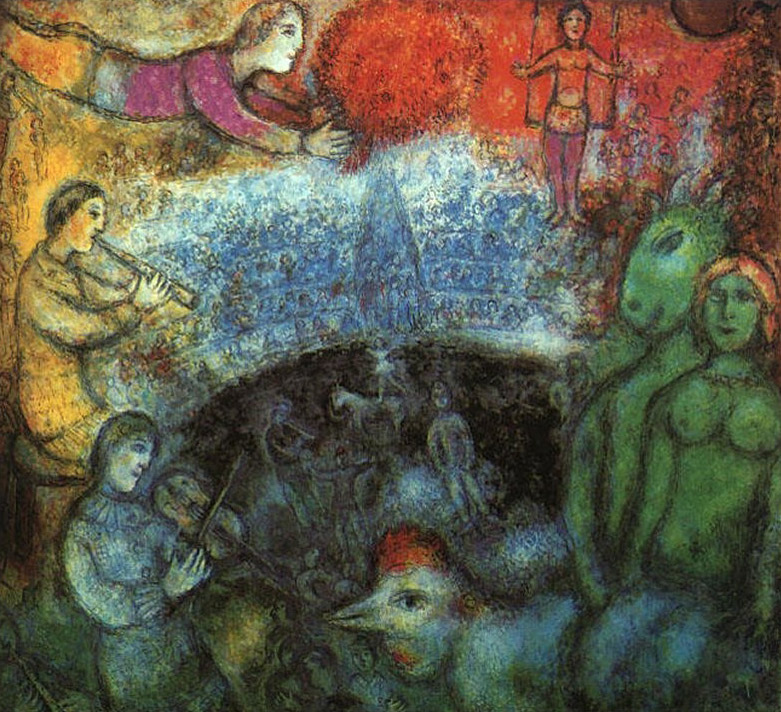
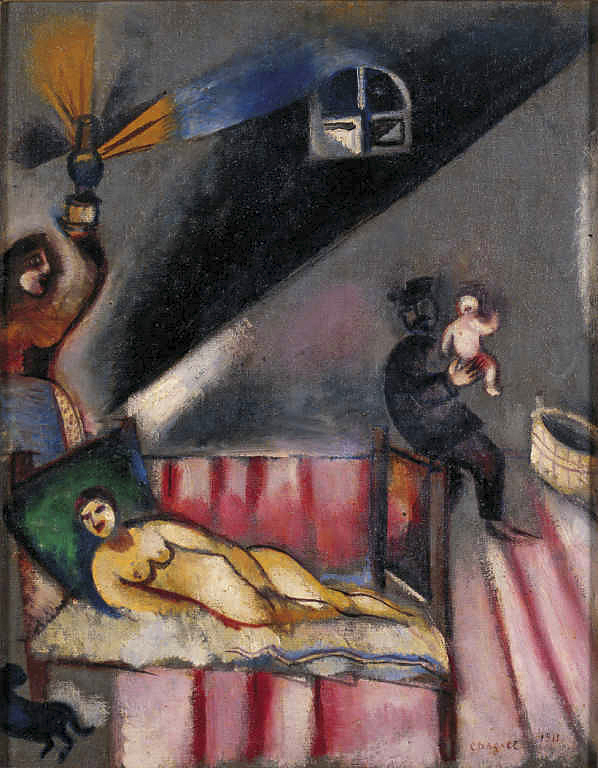









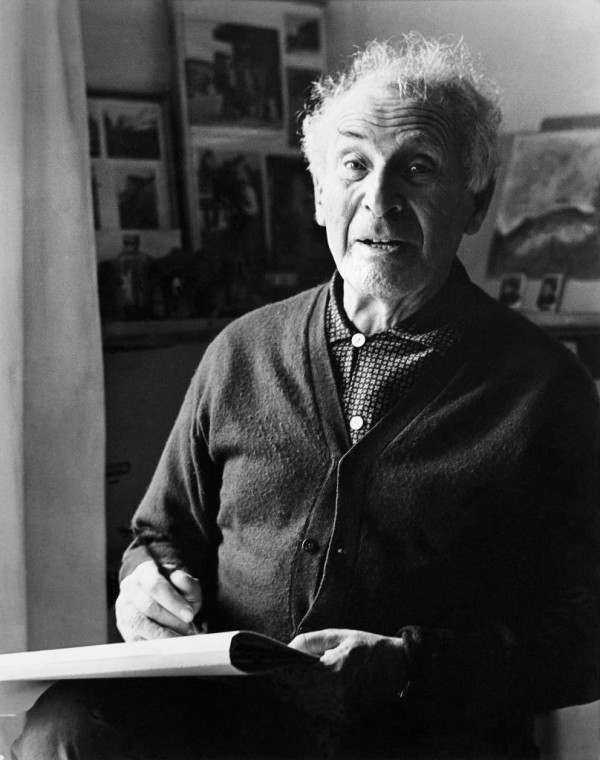
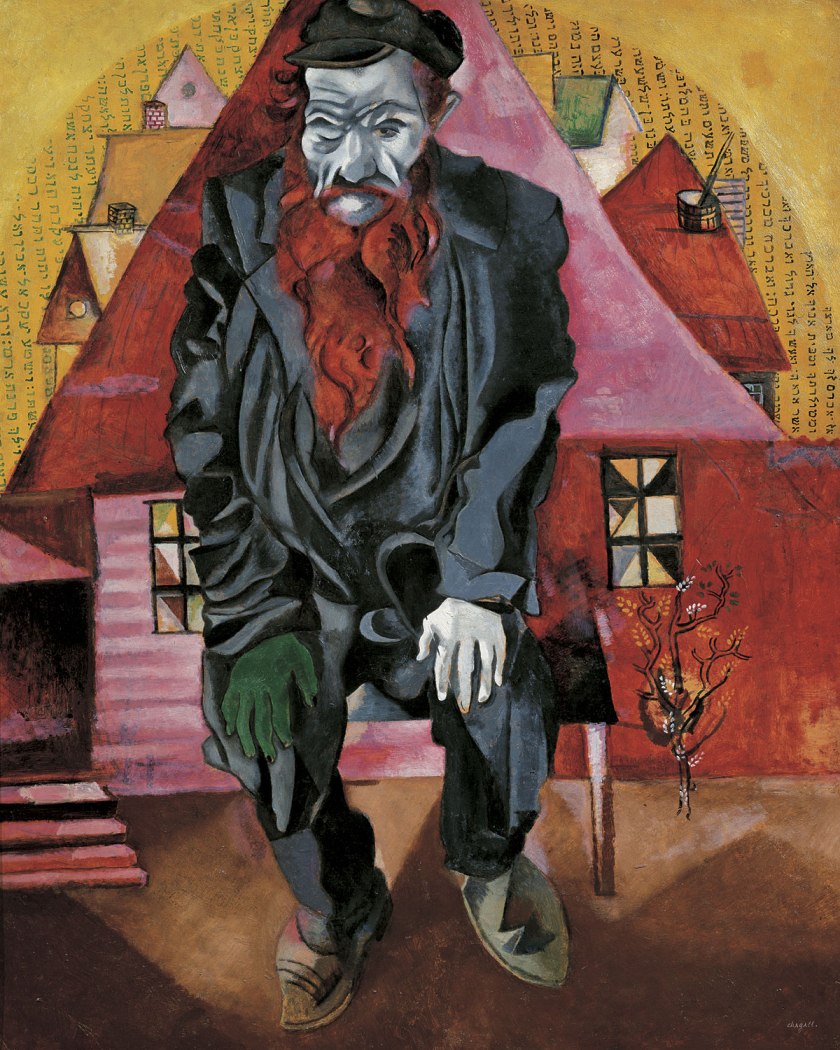
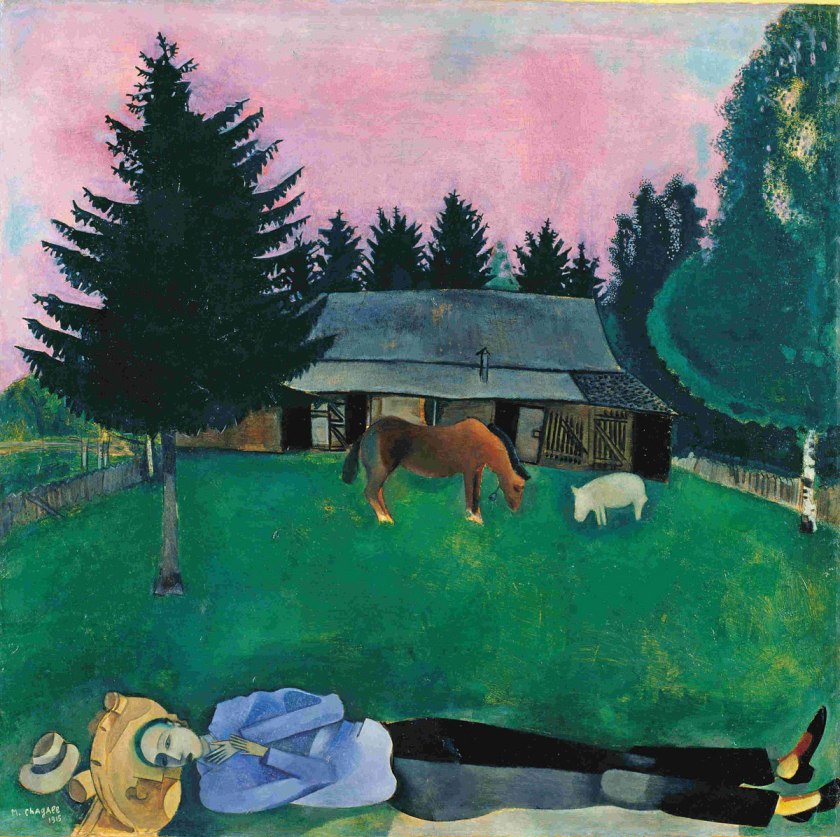
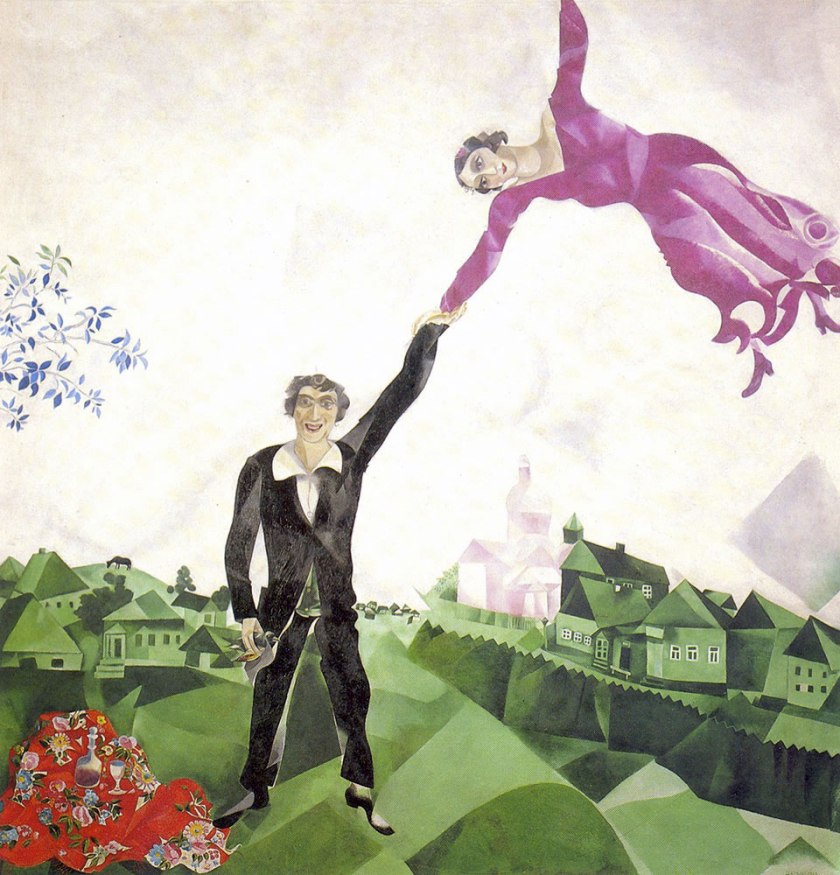
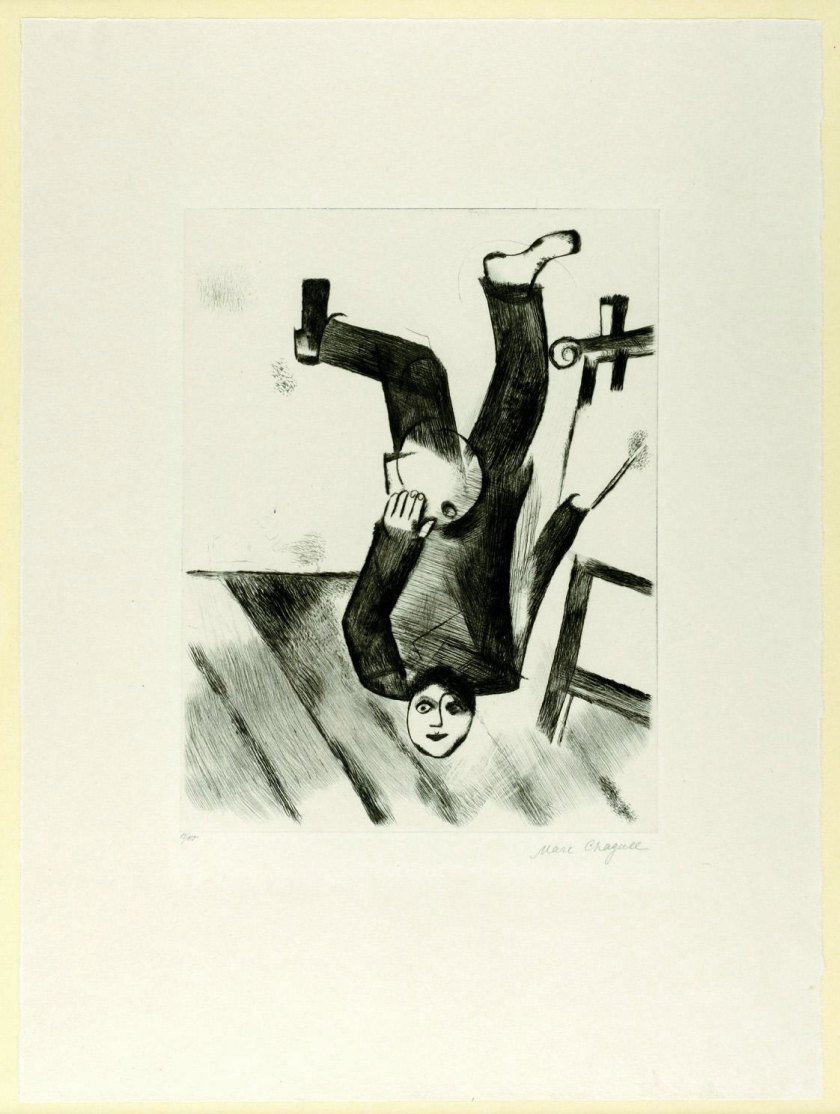





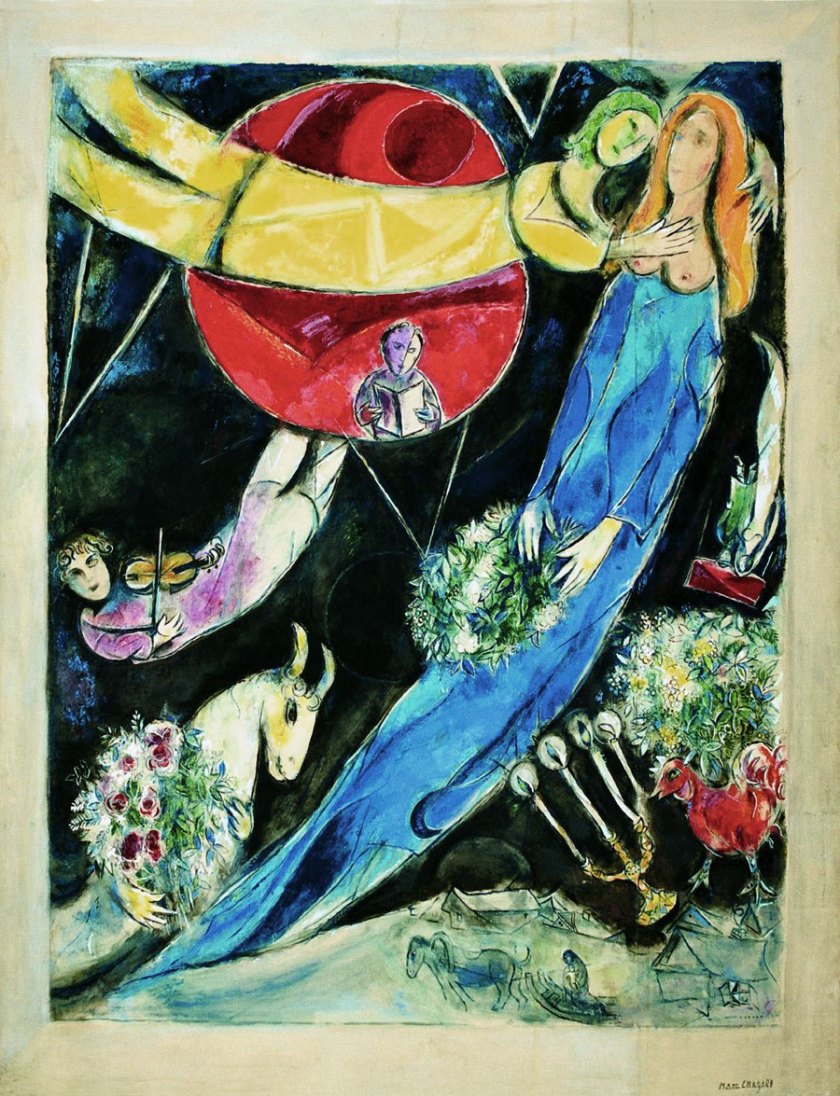


You must be logged in to post a comment.